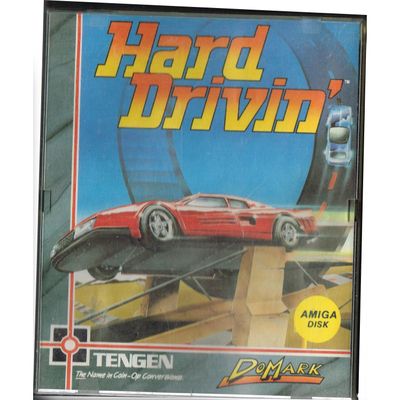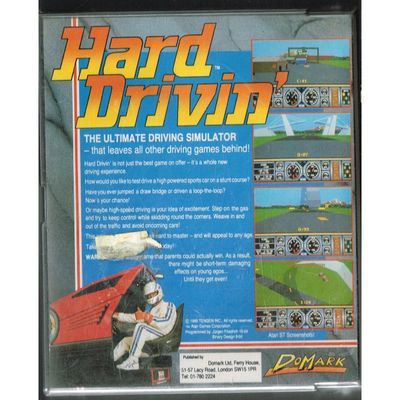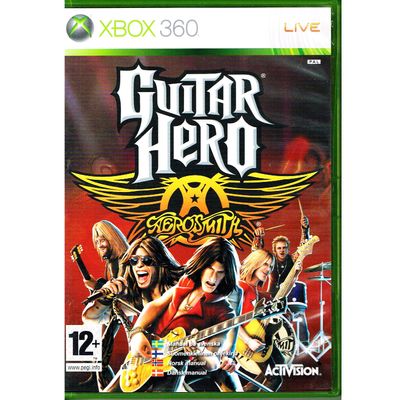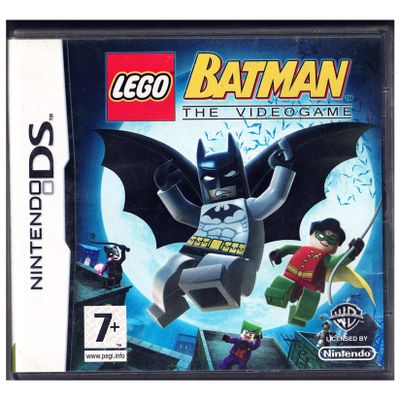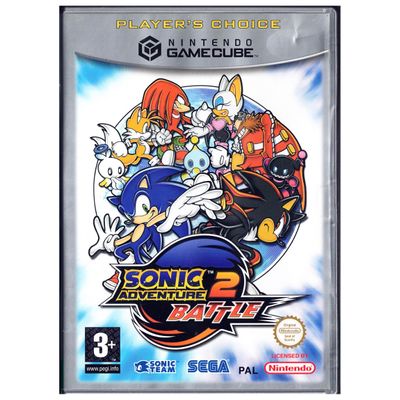HARD DRIVIN AMIGA
Liknande produkter
Beskrivning av HARD DRIVIN AMIGA
HARD DRIVIN AMIGA
The player plays as Bo and Luke Duke who is racing to pay off the Duke farm. The player must play through missions that include Bo and Luke outrunning Rosco and Enos, and saving their cousin Daisy Duke from Black Jack Perril who wants revenge on their uncle Jesse Duke.
ReceptionHard Drivin' is a 1989 driving arcade game that invites players to test drive a high-powered sports car on stunt and speed courses. The game featured one of the first 3D polygon driving environments via a simulator cabinet, rendered with a custom architecture.The force feedback, car physics simulator, game design and most game programming were done by Max Behensky.According to the in-game credit screen, Hard Drivin' was designed by two teams working concurrently in the United States and Ireland.
Development began in 1988. Atari also originally intended to release the game in 1988. However, according to one of Atari's Engineer and designer, it was delayed due to the dispute from its Vice President claiming that no one would buy an arcade cabinet for $10,000 after The Last Starfighter arcade game was canceled for the same reason a few years earlier. After weeks of research, it was decided that $10,000 was an acceptable price point.
Hard Drivin' was released in February 1989, when arcade driving games were largely implemented with scaled 2D sprites, such as Pole Position and OutRun, and when filled-polygon 3D graphics of any kind were rare in games. Hard Drivin' is the second commercially released arcade racing game to use 3D polygons, after Winning Run.
In total, there are fifteen variations of the arcade unit. The eleven cockpit and four compact machines included various British, German and Japanese versions.
Hard Drivin' sold 3,318 video game arcade cabinets. It was followed by a sequel, Race Drivin', in 1990. The PC games Stunt Driver and Stunts, although not official licences, shared many elements with the two games.
The gameplay resembles a driving game, featuring a car similar in appearance to a Ferrari Testarossa, referred to in the game as an expensive "sports car". The screen shows a first person perspective from inside the car, through the windshield. To separate it from other driving titles of that era, stunt loops and other road hazards were added. The game generally consists of 1 or 2 laps around the stunt track. In certain modes, if the player scored in the top 10, the player races against the computer controlled car, Phantom Photon. In this race, it was possible to race the wrong way around the course and beat the Phantom Photon across the start-finish line. The game challenges the players in a daredevil fashion and broke away from traditional racing games like Pole Position. It was also one of the first games to allow for more than three initials on the high-score board; which enterprising drivers could use to their advantage to construct sentences during the course of game-play.
It also features a realistic manual transmission mode (including a clutch pedal and the possibility of stalling the car should one mis-shift) and force feedback steering wheel, in which the driver would have to properly operate the car as they would in real life.
A notable feature of the game is the "instant replay" display that is presented after a crash, which sets Hard Drivin' apart from most driving games of its time, which after a crash would just put the player back on the road, stopped, and let them accelerate again. Before resuming play after a crash, Hard Drivin' would run an approximately ten second animation, captioned "Instant Replay", which showed a wide aerial view of the movements of the player's car and surrounding vehicles leading up to the crash, with the player's car always centered on the screen. During the replay, the player could not change the action on screen, but the replay could be aborted to immediately get back to active gameplay. The replay would continue for about two or three seconds after the crash, showing a polygon-rendered fireball and the movement of the car, including any spinning, flipping, or bouncing off the struck obstacle. The replays add to the appeal of the game and actually add a motivation to crash in spectacular ways in order to see them played out from the aerial view.
Besides collisions, a non-survivable landing after going airborne (even if the car landed right-side up), or even going too far off-road, could cause a crash which would be replayed like any other crash, with the car even exploding into the same orange fireball. The game tracks the player's progress around the track by invisible waypoints (denoted by flags on the course map showing the player's progress when the game ends due to time running out), and after a crash, the car is placed back on the track at the last waypoint passed; this sometimes is a significant distance back from the point of collision. (One of the waypoints on each track was the marked checkpoint about halfway around, which when passed granted the player extra time.)
Hard Drivin's approach to collisions or unrealistic events—putting the car back on the road at a standstill—was the norm for driving games until later games such as Cruisin' USA and its successors introduced intentionally artificial physics to force a car to always stay near the road and land right-side up pointing forward.
After going off-road, the player has ten seconds to return to the road, or else he will be stopped and returned to the road, at a standstill, at the last waypoint passed (just like when a crash occurs, but without an instant replay).
I BOX UTAN MANUAL



